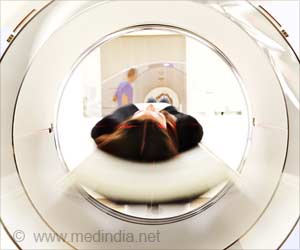Elipse Balloon does not require endoscopy, surgery or anesthesia and makes it suitable for patients who do not respond to weight loss treatments.

‘Swallow-able intragastric balloons induces appetite and helps achieve weight loss by making it easier to adhere to a low calorie diet.’





In this new study, the authors evaluated the efficacy and safety of a new swallowable IGB (Elipse™ Balloon, Allurion Technologies, MA, USA), not needing endoscopy or anesthesia, optimised to reduce risk and discomfort, in combination with a very low calorie ketogenic diet (low calorie and low carbohydrate) (VLCKD) in the final month of therapy. The researchers did a prospective, non-randomised study in 50 obese individuals (BMI 30-45 kg/m2) who had failed to lose weight by diet alone and who had refused other IGB treatment, because of the need of an endoscopy and/or anesthesia, and were offered the Elipse Balloon.
The balloon was swallowed under fluoroscopy and then filled with 550mL of liquid. The balloon remains in the stomach for 16 weeks after which it spontaneously opens, empties, and is excreted. Follow-up was performed every 2 weeks.
In the last 4 weeks of treatment, a ketogenic diet (~700 kcal/day) was introduced to enhance weight loss and maximise the results to increase patient satisfaction. Once the balloon was excreted, patients were transitioned to a Mediterranean diet for weight maintenance.
A total of 42 patients (29 men and 13 women) patients were enrolled. Eight of the original 50 patients were contraindicated for balloon implantation for various reasons.
Advertisement
At 4, 8 and 12 weeks a mean weight loss of 5.4 kg, 8.9 kg and 11.5 kg was observed, respectively. In the VLCKD period (the final four weeks), a mean weight loss of 3.7 kg, was observed, similar to that seen between weeks 4 and 8.
Advertisement
Dr Ienca concludes: "The Elipse Balloon appears to be a safe and effective weight loss method. Furthermore, the introduction of a VLCKD improves weight loss. Because the Elipse Balloon does not require endoscopy, surgery or anaesthesia, this may make it suitable for a larger population of obese patients not responding to diet/lifestyle treatment.”
The balloon can also used by a variety of clinicians -- nutritionists, dietitians, and internists -- who currently do not have access to or are qualified to fit endoscopic or surgical weight loss devices. Furthermore, the absence of endoscopy and anaesthesia for placement and removal can lead to a significant cost savings.
Source-Eurekalert















